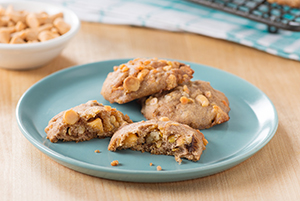Lentils 101: 10 Things Your Students Need to Know
25 March 2015
 Familiarity with cooking and incorporating lentils into various menu applications can help your students meet nutrition regulations, budgets and consumer demands when they become foodservice professionals.
Familiarity with cooking and incorporating lentils into various menu applications can help your students meet nutrition regulations, budgets and consumer demands when they become foodservice professionals.
Foodservice educators not only need to prepare their students to meet expanding nutrition regulations in schools and healthcare settings, but to simultaneously cater to increasing consumer preferences for healthy, affordable and sustainable ingredients that—above all—still taste good. Allow us to introduce a dark horse in helping foodservice educators rise to meet this challenge: lentils.
Top 10 Facts Your Students Need to Know About Lentils
- Lentils are nutritional powerhouses. They are cholesterol-free and sodium-free, and loaded with potassium, folate, iron and fiber. One serving of lentils boasts nearly half as much protein as a serving of pork, and two times as much proteinas a serving of quinoa.
- Lentils naturally cater to a variety of specialty diets, including gluten-free, vegetarian and allergen-friendly. Lentil flour can even be used as a wheat-flour alternative to make gluten-free baked goods (like the cookies pictured).
 Foodservice educators have the responsibility of recognizing and predicting long-term trends, and should be cautious of fads that may run their course by the time today’s culinary students become foodservice professionals. If there’s one trend the foodservice industry has seen continuously on the rise, it’s the consumer attention to what’s in their food. As a truly sustainable, versatile and nutrient-rich food source, lentils aren’t going anywhere—except maybe into more foodservice curricula.
Foodservice educators have the responsibility of recognizing and predicting long-term trends, and should be cautious of fads that may run their course by the time today’s culinary students become foodservice professionals. If there’s one trend the foodservice industry has seen continuously on the rise, it’s the consumer attention to what’s in their food. As a truly sustainable, versatile and nutrient-rich food source, lentils aren’t going anywhere—except maybe into more foodservice curricula.
Established in 1965, This email address is being protected from spambots. You need JavaScript enabled to view it. is a resource for recipes, preparation or storage tips, and sourcing information for foodservice providers. The USADPLC is a nonprofit organization dedicated to promoting and protecting the interests of growers, processors, warehousemen and sellers of dry peas, lentils and chickpeas in the United States. The 5,000 growers, processors, exporters and associates represented by the USA DPLC take pride in their ability to produce the highest quality dry peas, lentils and chickpeas for national and international markets.
Visit www.cookingwithpulses.com or contact Mackenzie Lilwall at This email address is being protected from spambots. You need JavaScript enabled to view it. for more information.
